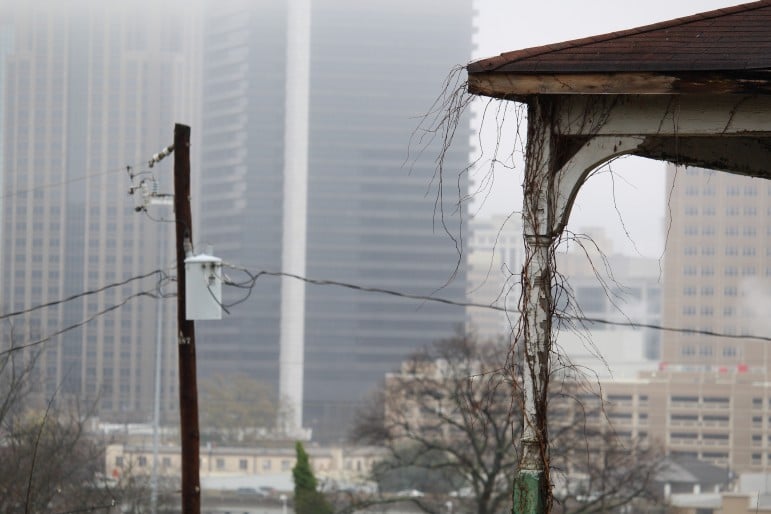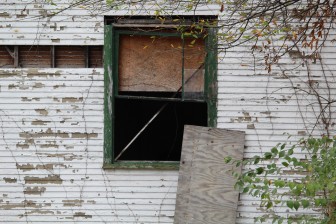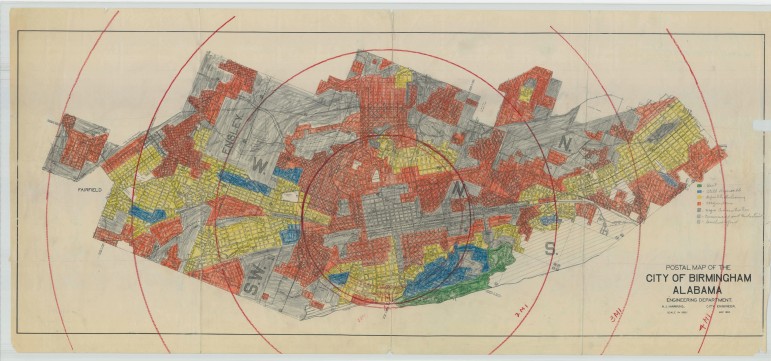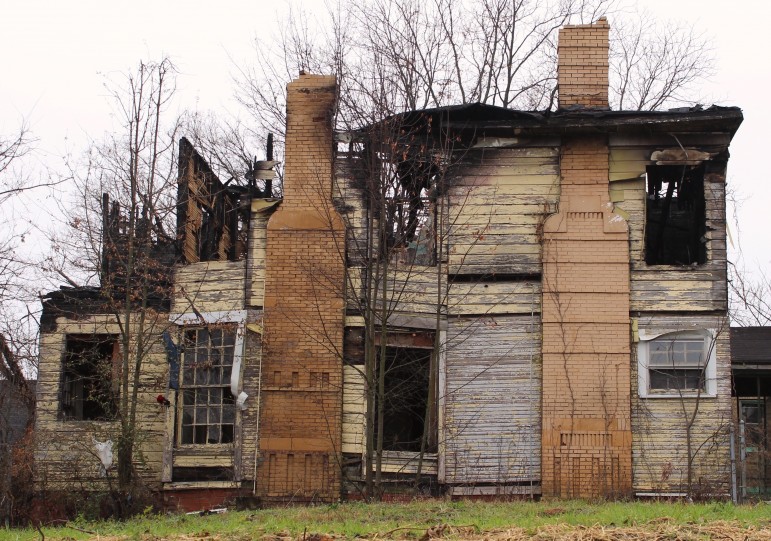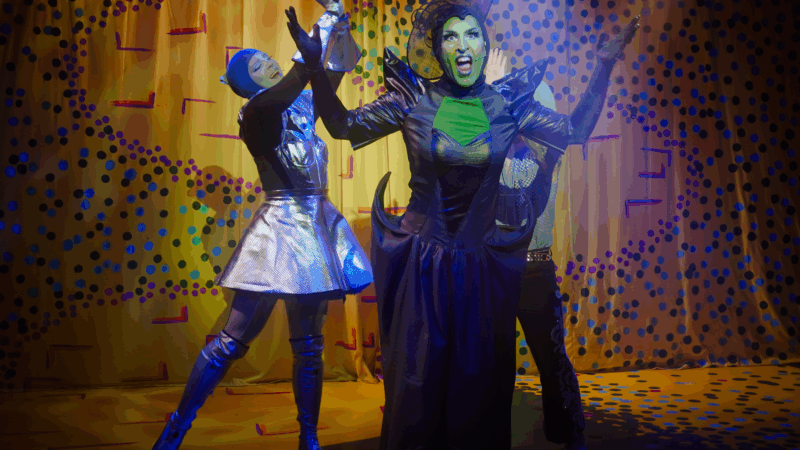Losing History in One of Birmingham’s Oldest Neighborhoods
Birmingham city leaders are stepping up efforts to deal with dilapidated or abandoned properties. In communities overshadowed by blight, preservation is rarely an option, since resources are devoted to cleaning up and demolishing hazardous properties. In these neighborhoods, residents want to document the past before it’s destroyed.
A Crumbling History
Andre Brown drives a blue pickup through the Fountain Heights neighborhood of Birmingham where he’s lived almost all his life. There are striking views of downtown from all around this hilltop community, and Brown says every home he passes tells a story.
“See I know that’s an old historical building that’s gonna be torn down — it’s already on the demolition list,” he says. “You can tell by the masonry of the brick that the homes are old.”
Brown points to one of the Victorian homes that line the streets of Fountain Heights. Many of its historic buildings were built in the 1800s. They feature double chimneys and wrap-around porches, and for years they have been falling apart. He says that when he moved to the community as a small child in 1966, things were different.
“The area was really a beautiful area,” he recalls. “It was kept clean, paved roads. People could almost, back then, leave your front door open sometimes. But then times changed.”
The Frontline of Desegregation
The abandoned homes in Fountain Heights are some of the oldest in Birmingham. University of Alabama at Birmingham (UAB) Assistant Professor Pamela King has surveyed its historic buildings. She says the neighborhood “has some histories that are absolutely unique in the city, so when it’s gone, it’s gone.”
According to King, it began in the 1880s as a Jewish community. Jews eventually migrated out, and by the 1940s, it was a working class white neighborhood. Middle-class blacks began to move into the area, crossing over from Smithfield. Local white supremacists and the Ku Klux Klan tried to keep blacks out of Fountain Heights, but things changed in 1964 when segregation became illegal.
“I think of it as the frontline of Birmingham’s desegregation,” says King. “And there’s a huge wave of African-Americans who move in right that year. I interviewed some and … by 1969, 1970, according to Birmingham Census and Records, it’s 100 percent Black.”
Abandoning Neighborhoods
Around this time, construction began for Interstate 65. It cut directly through Fountain Heights and the neighboring community of Enon Ridge. Andre Brown remembers the impact it had.
“The highway came in when I was a kid,” he says. “That cut off the black communities then and it kind of destroyed a lot of beautification that was in Fountain Heights.”
By the 1970s, Fountain Heights was surrounded by interstate on three sides and property values declined. Middle- and upper-income black families began to leave the area. John Colón, the Birmingham’s community development director, says these outward migration patterns occurred throughout inner-city Birmingham.
“We’ve lost a third of our population essentially over the past 50, 60 years,” he says. “And as folks left the city, they left sort of a surplus of housing.”
Housing Discrimination
In addition to population loss, Colón says the current issue of vacancy can be traced to housing discrimination. “We found these old maps that were actually produced by the city’s planning department.”
These “red line maps” divided the city into areas deemed “best, desirable, hazardous” and those with “negro concentrations.” Colón says local banks and financial groups used the maps to discriminate against African-American homeowners. “When we take those areas and overlay them over today’s blight conditions, we see that it’s those same areas that were deemed “negro concentrations” that are now the most blighted communities in the city of Birmingham,” he explains.
Unintended Consequences
The city is now trying to address the problem, using $6.5 million to tear down or maintain vacant properties.
In Fountain Heights, Andre Brown says many historic homes are beyond repair, but he hopes the history will not be forgotten. Continuing the drive through his neighborhood, Brown points to structures across from his own house:
“The KKK either met in the building right here on the corner – the Klan did. It would be either that one, or this building right here.”
Fountain Heights is just one of 99 neighborhoods that make up the city of Birmingham, each with a unique story. Brown thinks the government should devote more resources towards historic preservation.
“We’re still struggling here to preserve Fountain Heights,” he says. “And federal money needs to be put into these old neighborhoods.”
In communities like Fountain Heights, residents look forward to change. But with each vacant home that’s demolished, they risk losing touch with the very history that led to the problem.
Brigitte Bardot, sex goddess of cinema, has died
Legendary screen siren and animal rights activist Brigitte Bardot has died at age 91. The alluring former model starred in numerous movies, often playing the highly sexualized love interest.
For Ukrainians, a nuclear missile museum is a bitter reminder of what the country gave up
The Museum of Strategic Missile Forces tells the story of how Ukraine dismantled its nuclear weapons arsenal after independence in 1991. Today many Ukrainians believe that decision to give up nukes was a mistake.
Jeffrey R. Holland, next in line to lead Church of Jesus Christ of Latter-day Saints, dies at 85
Jeffrey R. Holland led the Quorum of the Twelve Apostles, a key governing body. He was next in line to become the church's president.
Winter storm brings heavy snow and ice to busy holiday travel weekend
A powerful winter storm is impacting parts of the U.S. with major snowfall, ice, and below zero wind chills. The conditions are disrupting holiday travel and could last through next week.
Disability rights advocate Bob Kafka dead at 79
Bob Kafka was an organizer with ADAPT (American Disabled for Attendant Programs Today), a group which advocates for policy change to support people with disabilities.
‘It’s behind you!’ How Britain goes wild for pantomimes during the holidays
Pantomimes are plays based on a well-known story — often a fairy tale — which are given a bawdy twist. The audience is expected to join in throughout, shouting as loudly as they can.

